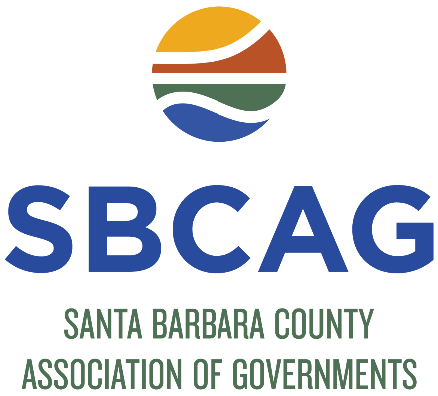Publication

New Report Reveals Changes and Trends in Regional Travel Patterns
January 23, 2024
The Understanding Regional Travel Patterns report sheds light on how people move into, out of, and within Santa Barbara County.
Santa Barbara County Association of Governments (SBCAG) released its final report on regional travel patterns, revealing some surprising findings that could shape future transportation planning efforts. Titled Understanding Regional Travel Patterns, this report presents reliable and informative statistics and trends related to transportation, land use, people, mobility, the economy, and social equity.
Delving into time periods before, during, and after COVID-19, the report uncovers key indicators and metrics that follow movement over time. The findings are essential for understanding how the region has been trending that can inform future transportation planning efforts.
Vehicle miles traveled in the region have dropped by nearly 9 percent since before the pandemic, according to Michael Becker, director of planning.
“This significant trend, along with data on population, jobs, housing, travel demand, and equity, offers a valuable snapshot of the region,” said Becker. “It serves as a useful tool for decision-makers tasked with allocating limited resources to plan for the future.”
The report also provides a unique analysis of each city and county unincorporated area in the region along with data on the U.S. 101, State Route 154, and State Route 166.
The effort relies on collaboration with the state, local partners, and the Air Pollution Control District.
Information from the report can be paired with traditional planning tools from cities, county and transit partners to quantify how successful or unsuccessful the solutions have been at reducing congestion or lowering overall vehicle miles traveled.
Some highlights from the report:
- Overall vehicle miles traveled, or the total sum of the distance of all vehicle trips on an average day, has decreased by 8.9% compared to pre-pandemic conditions.
- The adult and child populations in the middle age groups of 30-49 and 0-9 are shrinking, while the number of older individuals is on the rise. There has been a notable 71% increase in the 60-69 age group, which equates to a growth of 19,000 people in the two decades.
- The availability of rental housing has plummeted by approximately 40% in the past decade, leaving just 1.1% of units available in 2022.
- Remote work surged by more than 150 percent since 2019, with an average of 25,129 individuals now working from home. This represents a change from 6 percent of the total workforce in 2019 to roughly 15 percent in 2022.
- Of the trips between the North County and the South Coast, the City of Buellton produces the longest work commutes in the region at an average of 25.9 miles while the City of Santa Barbara has the shortest average work commutes at 8.9 miles.
- The majority of people who work in Santa Barbara and Santa Maria actually live in those cities. However, in Buellton and Guadalupe, less than 20 percent of workers live there. The trend continues in Solvang and Goleta, where many commuters come from outside the city.
- More than half of drivers on U.S. 101 choose State Route 154 over continuing U.S. 101 based on their travel distance, with a slight bias towards State Route 154 when traveling southbound.
- Approximately 38,500 Ventura County residents travel to Santa Barbara County on an average weekday. Out of these trips, around 11,100 are made for work purposes. More than half of these commuters have household incomes greater than $100k.
This project utilized data from the U.S. Census Bureau and a large-scale simulation travel modeling tool, Replica.
Unlike traditional forecasting models that rely on Census data, traffic counts and surveys, Replica uses big data sources like mobile location (cell phone, GPS), economic activity (credit card data), built environment (land use), consumer/resident (demographic data from public and private sources) and ground truth that has been processed to model behavior in aggregate, but does not produce actual movements (or compromise the privacy) of any one individual. This approach ensures a highly accurate picture of existing travel patterns without compromising individual privacy.
The result is the best model available for a comprehensive overview of the entire transportation landscape to better understand how, why, and where people travel.
More information about the analysis of the project using both Replica platform and other data sources along with the results is available in the Understanding Regional Travel Patterns Report.



